How many species of anteater are there?
There are four known species of anteaters:
- giant anteater (also known as the ant bear), Myrmecophaga tridactyla
- northern tamandua, Tamandua mexicana
- southern tamandua (also known as the collared anteater or lesser anteater), Tamandua tetradactyla
- silky anteater (also known as the pygmy anteater), Cyclopes didactylus
As its name suggests, the giant anteater is largest of these.
How big is the giant anteater?
Giant anteaters can reach up to 2m in length and weigh up to 55kg – on its hind legs, giant anteaters are taller than a grown man!
What are giant anteaters related to?
One of the closest relatives to the giant anteater is the pygmy sloth, who both shared a common ancestor over 55 million years ago!
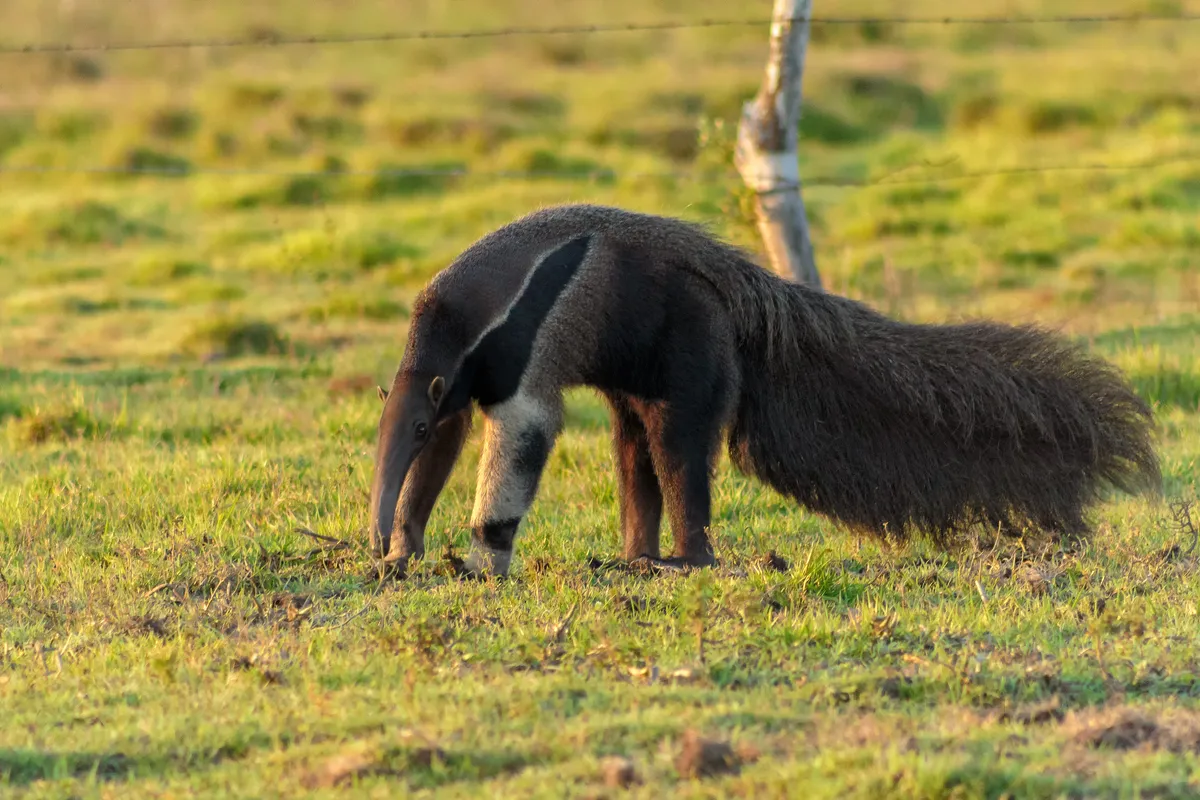
Where are giant anteaters found?
Giant anteaters have been recorded from Central America through to Bolivia, Paraguay and Argentina, although in its Central American range it is greatly reduced and confined to highland regions. They tend to be found in tropical moist forest, dry forest, savannas and open grasslands.
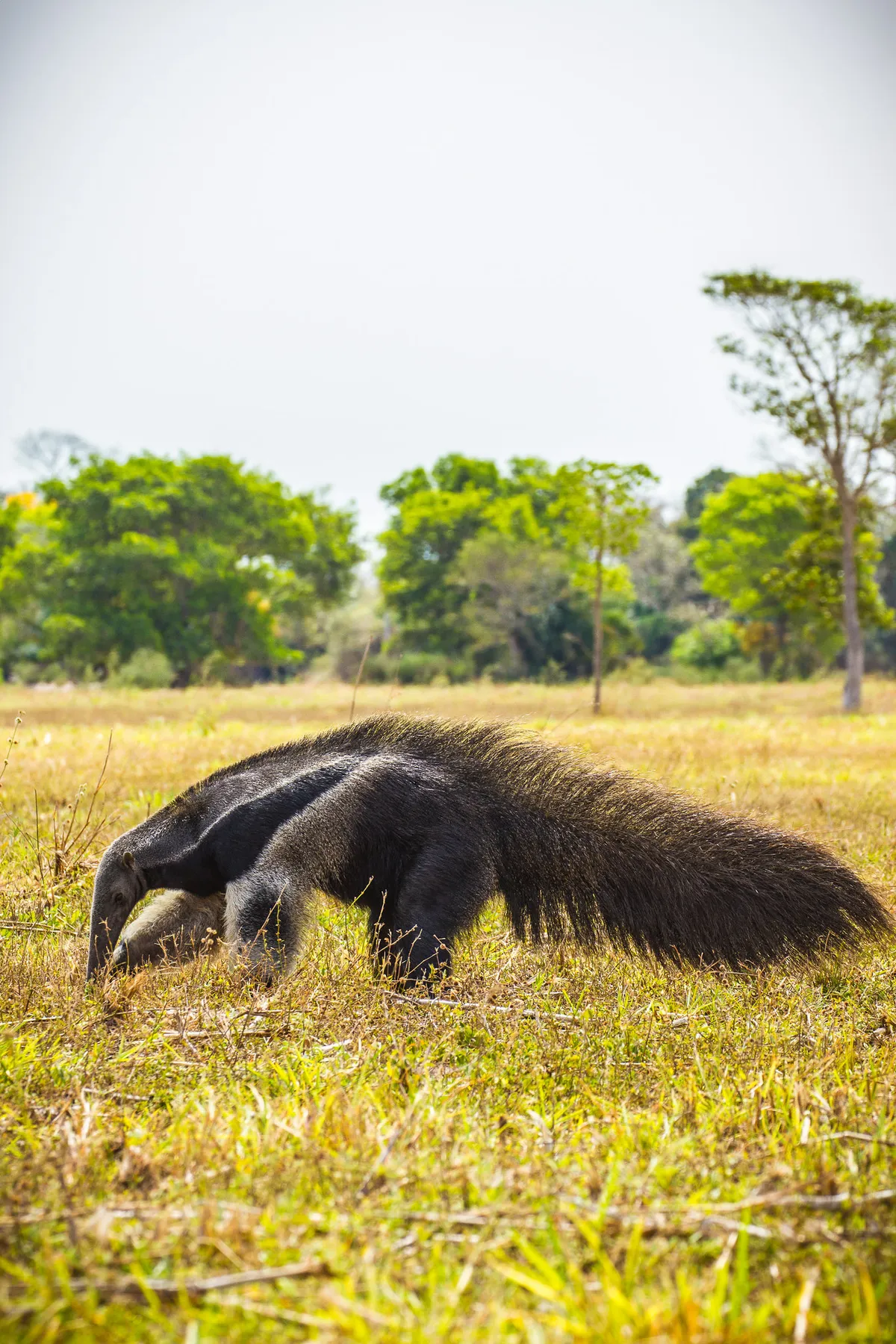
Why do giant anteaters look so weird?
Giant anteaters are quite distinctive looking - their long snouts contain a sticky tongue which can extend up to 50cm! They have long claws for opening up termite and ant nests which are so large that they appear to walk on their wrists. They also have a bushy tail which they use as a sunshade.
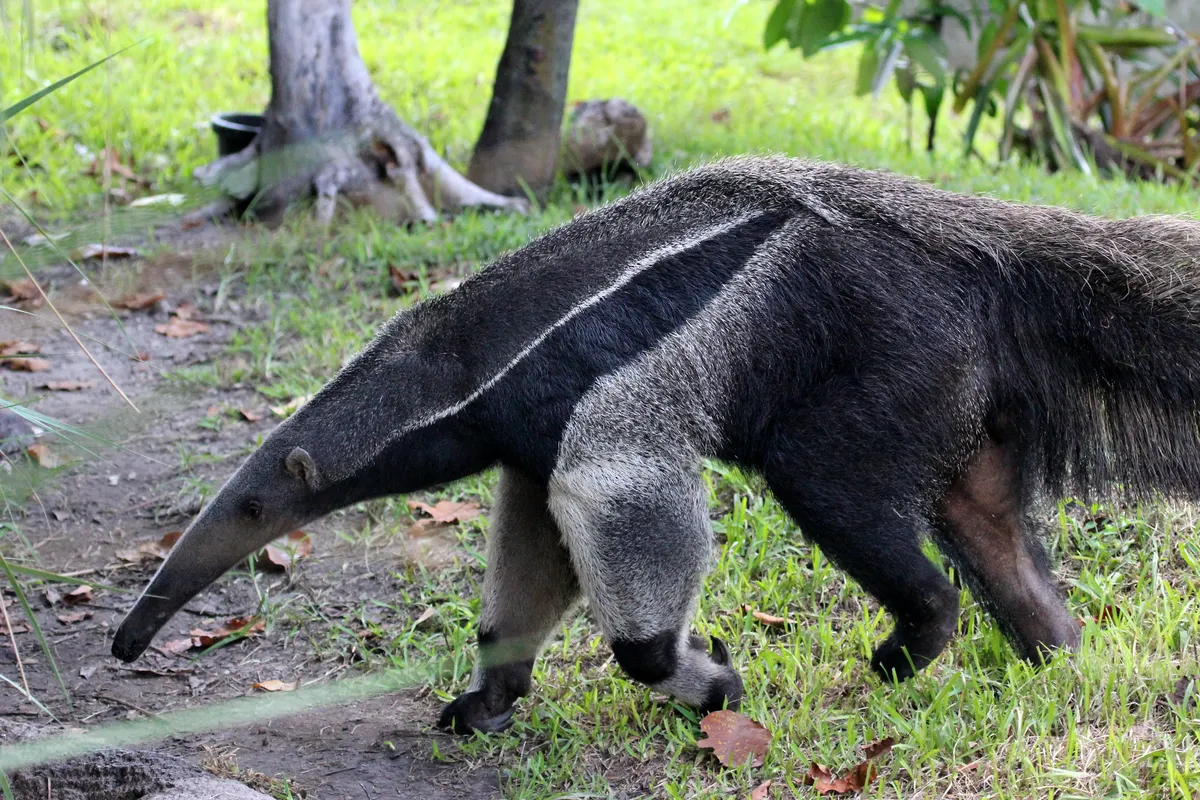
What do giant anteaters eat?
Anteaters primarily eat ants and termites – up to 30,000 a day.
Giant anteaters are well adapted to feast on their favourite foods – they are poorly sighted but use their keen sense of smell to detect ant and termite nests and then their sharp claws to rip them open. They don’t have teeth, so they slurp up their prey with their long sticky tongues.
These ants will bite back, so giant anteaters are equipped with thick skin and long hairs to protect them from ant bites.

What are giant anteater families like?
Giant anteaters tend to be solitary animals, with a female birthing and raising a single offspring per year. The baby is carried on its mothers back for up to six months.

Are giant anteaters dangerous?
Giant anteaters are generally docile, but if they feel threatened they can rear-up on their hind legs and swipe with their claws. They’re not to be messed with - giant anteaters can fight off pumas and jaguars!
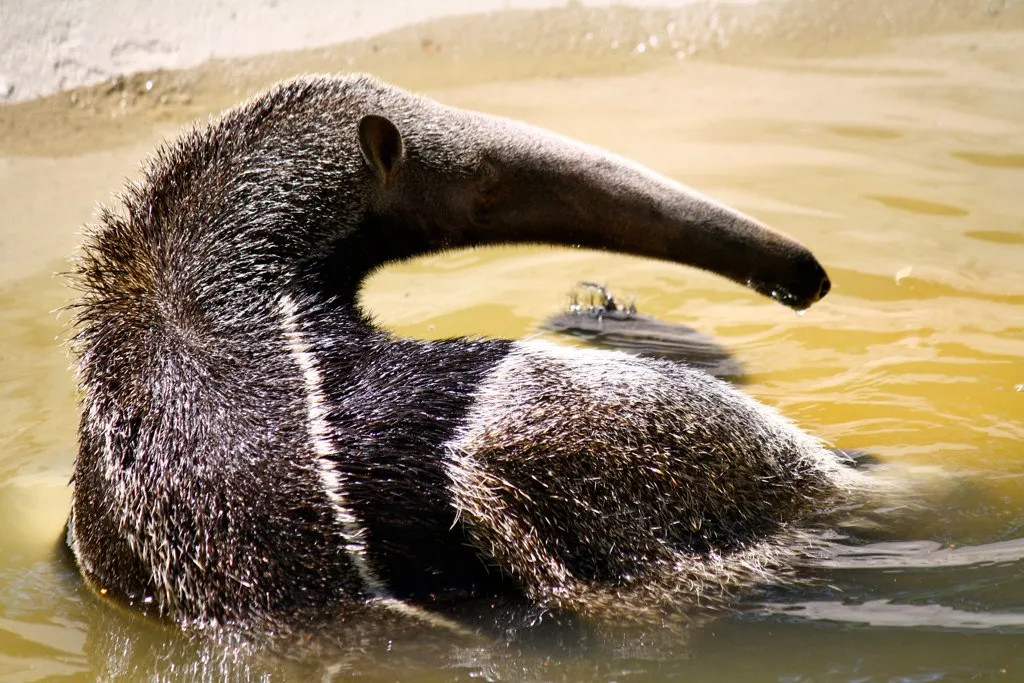
How long do giant anteaters live for?
The life expectancy of a giant anteater is around 10.5 years for females and 14.8 years for males.
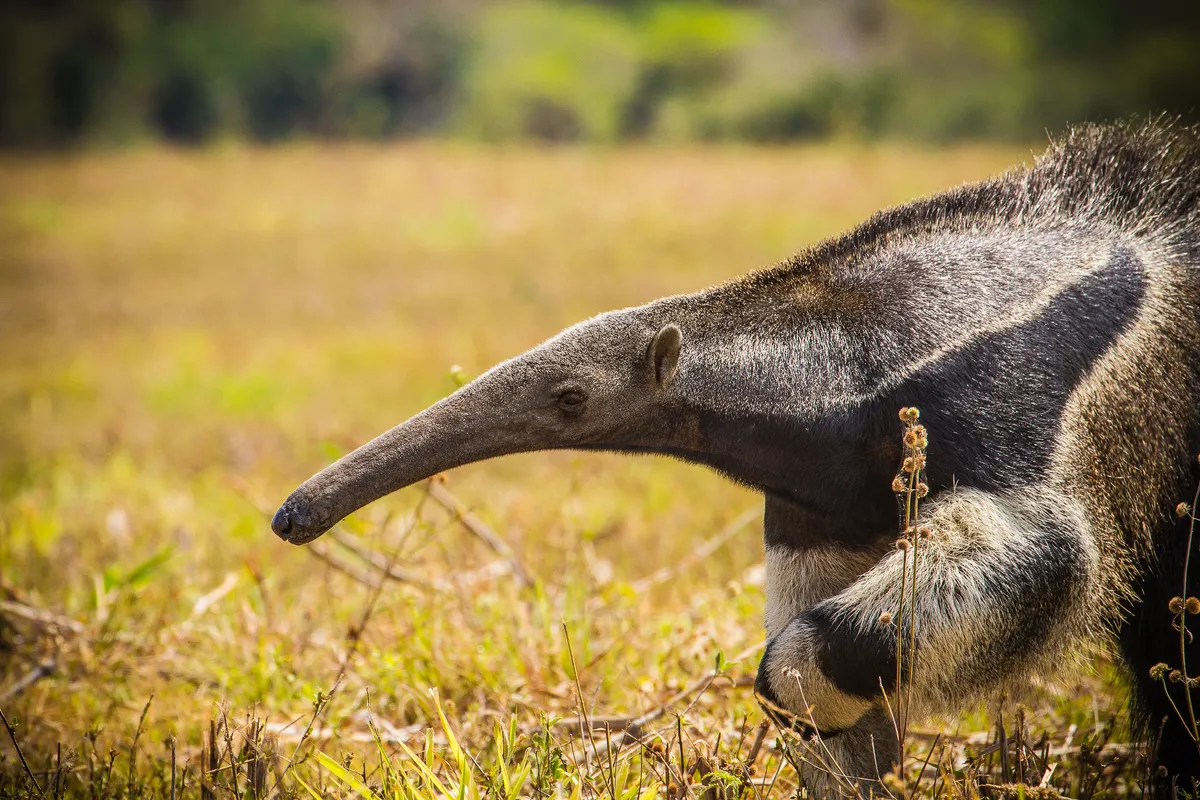
Can giant anteaters swim?
Giant anteaters are very good swimmers – although they tend to keep their snout above the water.
Can giant anteaters climb?
Giant anteaters have been known to climb trees, though it's not a commonly-witnessed behaviour.
Are giant anteaters at risk of extinction?
According to the IUCN Red List, the giant anteater is listed as Vulnerable. It’s considered the most threatened mammal of Central America and is listed on Appendix II of CITES and its range lies in many protected areas.
The giant anteater also features on the ZSL EDGE of Existence Mammal List due to its threatened status and its high evolutionary distinctiveness. The main threats to the giant anteater include habitat loss through fires, hunting as pests or for food and being killed by cars when crossing roads that run through their natural habitat.
Discover more bizarre animals from around the world
- There's a peculiar animal in the Amazon that has a triangular head and looks like a log
- It's nicknamed the 'bearcat', smells like popcorn and lives in trees – meet the baffling binturong
- There's a rare and mystifying animal in the Pyrenees mountains that looks like a tiny, furry elephant
- Massive eyes, exceedingly long intestines and a flying cloak – meet the almost unfathomable colugo
- Ghost dog of the Amazon - the mysterious canine so rare it’s almost never seen
Ignatius-Roy Hillcoat-Nalletamby is an EDGE of Existence Storytelling Intern at the Zoological Society of London (ZSL).
Top image: a giant anteater crossing the Rio Sararé in Western Brazil. Credit: Bernard DUPONT from FRANCE, CC BY-SA 2.0, via Wikimedia Commons

